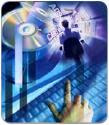Thursday, September 24, 2009
Egbert Chapter 2 Post 3
In Egbert’s (2009) chapter 2 the topic that stuck out to e the most was about the use of the computer lab (pg. 42). The text states that students should not be working on all the same things at the same time. I may get in trouble for this but I almost think this is absurd. Teachers can try to differentiate the types of work that students are working on but I think that it is crazy to expect the teacher to be able to keep up with all of it in a class of 30. A computer lab is usually a place where the computers are arranged in a circle and the teacher usually walks around the inside. If all the students are working on the same thing I think that the teachers will have a easier time monitoring the students progress and determining what that student needs to be successful. Many times I think this text are not real life enough and in this case it’s not. Every teacher wants to be a good teacher but the overuse of technology in the classroom can defeat the purpose. Egbert, J. (2009). Supporting learning with technology: Essentials of classroom practice. Upper Saddle River, NJ: Pearson Prentice Hall.
Subscribe to:
Post Comments (Atom)

I see your point about the difficult job a teacher has to monitor 30 students at a time. However, I feel the author meant that students should be using the computers for a variety of tasks simultaneously. For example, one might be creating a PowerPoint presentation for a social studies concept while another is typing a paper for language arts in Word. Unfortunately, this is not how computer labs are utilized in my school. Our labs are used primarily for students to progress through different levels on Successmaker reading and math software programs. BORING!!! I think I need to share some information from my readings with my principal!
ReplyDeleteI read it again and you are right. It was talking about simulataneous tasks. That makes mroe sense now. This blogging really helps because it allows us to see things from different viewpoint and help each other to understand different perspectives.
ReplyDelete